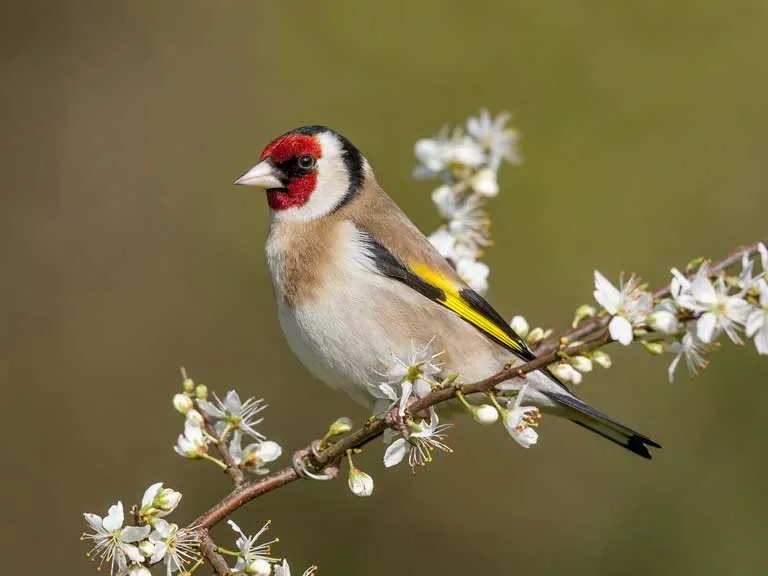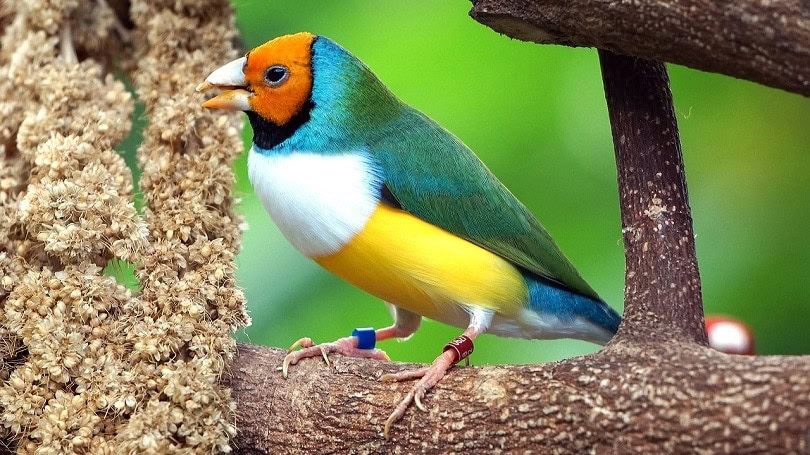If you’re a bird enthusiast or just someone curious about nature, chances are you’ve heard of finches. These tiny, colorful birds are like nature’s confetti, bringing a splash of life and vibrancy wherever they go. But did you know there are over 200 species of finches spread across the globe? Yup, these feathered friends are incredibly diverse, and there’s a lot to learn about them.
In this article, we’ll dive deep into the fascinating world of finch bird species, breaking it down in a way that’s easy to understand and fun to read. So, grab your favorite drink, and let’s get started!

What Are Finch Birds Anyway?
Finches are small to medium-sized passerine birds, which means they’re part of the perching bird family. Think of them as the ultimate tree-dwellers, hopping from branch to branch like little gymnasts. They belong to the family Fringillidae and are known for their strong, conical beaks. Why? Because these beaks are built to crack seeds like pros!
Most finch species are found in the Northern Hemisphere, but you’ll also spot them in tropical regions, deserts, and even remote islands. They’re like the ultimate jet-setters of the bird world.
Types of Finch Bird Species (Expanded Edition)
When it comes to finch species, there’s no shortage of variety. These tiny birds come in all sorts of colors, shapes, and personalities, each with unique traits that make them special. Let’s dive deeper into some of the most fascinating finch species and what sets them apart:
1. Zebra Finch
- Scientific Name: Taeniopygia guttata
- Habitat: Native to Australia, particularly in grasslands and open forests, but now found as pets all over the world.
- Features: These finches are the social butterflies of the bird world. Their striking black-and-white “zebra” stripes on their tails, combined with orange cheeks (in males), make them super easy to identify. Zebra finches are also known for their hardy nature—they can adapt to various climates, which is why they’re such popular pets.
These finches are also fascinating when it comes to communication. Male zebra finches sing unique songs to attract mates, and once they settle down, they’re committed partners, often sticking with the same mate for life.
2. Gouldian Finch

- Scientific Name: Erythrura gouldiae
- Habitat: These stunning birds are native to Northern Australia, where they thrive in open woodlands, but they’ve also become highly prized in the pet trade.
- Features: Gouldian finches are like walking rainbows. They come in vibrant color combinations of green, yellow, purple, and red. There are even three distinct head color variations—red-headed, black-headed, and yellow-headed. It’s like Mother Nature couldn’t pick just one palette, so she went all out!
Gouldian finches are delicate, though. They need specific care to thrive in captivity, making them better suited for experienced bird owners. But with the right setup, they’re a joy to watch and care for.
3. House Finch
- Scientific Name: Haemorhous mexicanus
- Habitat: Originally found in Mexico and the southwestern United States, house finches have spread across North America and even parts of Hawaii.
- Features: If you’ve ever spotted a small, reddish bird hopping around a park or a backyard feeder, chances are it was a house finch. Males have a splash of red or orange on their heads and chests, while females have a more subtle brown streaked appearance.
House finches are incredibly adaptable and love urban and suburban settings. They’re not picky eaters either—you’ll often catch them snacking on sunflower seeds, fruits, and buds.
4. Purple Finch
- Scientific Name: Haemorhous purpureus
- Habitat: Forested areas across North America, particularly in coniferous or mixed woodlands.
- Features: The purple finch is like the house finch’s fancier cousin. While the name might suggest they’re purple, their plumage is more of a raspberry-red shade. These finches migrate south during winter, so you’re more likely to spot them in warmer regions when the temperature drops.
Fun fact: Purple finches often compete with house finches for food and nesting areas, leading to some avian drama!
5. Darwin’s Finches
- Scientific Name: Multiple species within the subfamily Geospizinae.
- Habitat: The Galápagos Islands, with some species also found on nearby islands and coastal areas of South America.
- Features: Darwin’s finches are like the rock stars of the bird world, thanks to their role in Charles Darwin’s groundbreaking work on evolution. These finches are a textbook example of adaptive radiation—each species evolved distinct beak shapes and sizes to suit their specific feeding habits.
From the cactus finch with its long, narrow beak to the ground finch with a short, robust one, these birds demonstrate how survival can shape physical traits over generations.
6. Society Finch
- Scientific Name: Lonchura striata domestica
- Habitat: Domesticated, but they’re believed to have originated from wild ancestors in Asia.
- Features: Society finches, also known as Bengalese finches, are entirely man-made through selective breeding. They’re incredibly docile and social, making them excellent pets, especially for beginners. These birds thrive in groups (hence the name “society”) and are happiest when surrounded by other finches.
They might not have the vibrant colors of a Gouldian finch, but their calm nature and ease of care more than make up for it.
7. American Goldfinch
- Scientific Name: Spinus tristis
- Habitat: North America, particularly in meadows, gardens, and fields.
- Features: These birds are like sunshine with wings. The males sport bright yellow feathers during the breeding season, while females have a more muted olive-yellow color. Come winter, their plumage turns brownish, making them a bit harder to spot.
Goldfinches are seed specialists, particularly fond of thistle and dandelion seeds. They’re also known for their bouncy, undulating flight pattern—like they’re on a rollercoaster ride through the sky.
8. Cassin’s Finch
- Scientific Name: Haemorhous cassinii
- Habitat: Mountainous regions of the western United States and Canada.
- Features: Cassin’s finch looks similar to the purple finch but has a distinct peaked crown and lighter streaking. These finches love high altitudes and can often be found in pine forests. Their diets include seeds, berries, and the occasional insect.
9. Hawaiian Honeycreeper (Related Species)
- Scientific Name: Various species within the family Fringillidae.
- Habitat: Endemic to the Hawaiian Islands.
- Features: Though technically part of the finch family, these birds have evolved in isolation, resulting in a wide range of colors, beak shapes, and behaviors. The honeycreeper family showcases just how diverse finches can be when given time and unique environmental challenges.
10. Rosy Finch
- Scientific Name: Leucosticte species.
- Habitat: High-altitude areas and cold climates, including the Rocky Mountains and Arctic tundra.
- Features: Rosy finches are the daredevils of the finch world, thriving in some of the harshest conditions imaginable. They have a mix of brown, pink, and rosy plumage, which helps them blend into rocky landscapes. Their tough-as-nails nature makes them a fascinating species to study.
Why Are Finches So Cool?
Finches aren’t just cute; they’re also incredibly interesting. Here’s why:
1. Master Seed Eaters
Their conical beaks make them experts at cracking seeds. Whether it’s sunflower seeds or millet, finches are the ultimate snacking champions.
2. Amazing Vocalists
Ever heard a finch sing? It’s like nature’s Spotify playlist. Each species has its unique song, and some even mimic other birds!
3. Color Variety
From the muted tones of the house finch to the vibrant hues of the Gouldian finch, there’s a finch for everyone.
Finch Habitats: Where to Spot Them
Finches are pretty adaptable, so you’ll find them in a variety of habitats. Here’s a quick rundown:
- Urban Areas: House finches and zebra finches are pros at adapting to city life.
- Woodlands: Gouldian finches and purple finches thrive in forested areas.
- Islands: Darwin’s finches rule the roost in the Galápagos.
- Deserts: Some finches, like the rosy finch, even live in harsh desert climates.
How to Attract Finches to Your Backyard
Want these charming birds to hang out in your backyard? Here are some tips:
1. Offer the Right Food
Finches love seeds. Fill your feeders with:
- Sunflower seeds
- Nyjer seeds
- Millet
2. Get a Finch Feeder
Choose a tube feeder with small openings—they’re perfect for their tiny beaks.
3. Provide Fresh Water
Birdbaths are a hit! Make sure the water is clean and shallow.
4. Plant Finch-Friendly Shrubs
Native plants like thistle and dandelions will attract these seed lovers.
Fun Finch Facts You’ll Love
- Monogamous Lovebirds: Most finches mate for life. Talk about relationship goals!
- Fast Flyers: These birds are tiny, but boy, can they zip through the sky.
- Social Butterflies: Finches thrive in flocks and get lonely without company.
Common FAQs About Finch Birds
1. Do finches make good pets?
Absolutely! They’re low-maintenance and don’t require much space. Plus, their cheerful chirping is super relaxing.
2. What do finches eat in the wild?
Finches primarily eat seeds, but they’ll also snack on small insects like aphids.
3. How long do finches live?
In captivity, they can live up to 10 years, but in the wild, it’s usually around 4-7 years.
4. Are finches easy to breed?
Yes! With the right setup, finches breed like champs. Just provide a nesting box and plenty of food.
Conclusion: Why Finches Deserve Your Love
Finches are more than just pretty birds—they’re little bundles of joy. Whether you’re watching them flit around your backyard or keeping them as pets, these feathered friends bring so much happiness. From their dazzling colors to their melodious songs, finches are truly a gift from nature.
If you’re lucky enough to spot a finch or two, take a moment to appreciate their charm. Who knows? They might just brighten your day with their cheerful antics!
